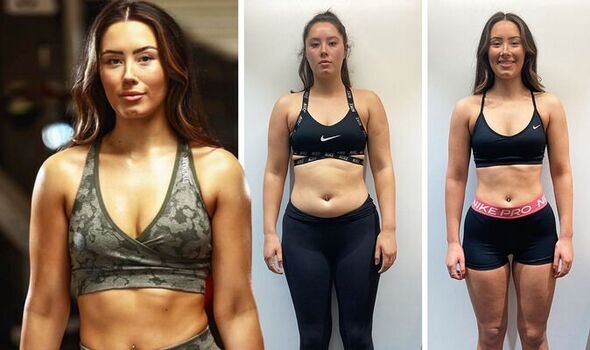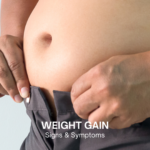Diet Plan for Weight Loss
Diet Plan for Weight Loss A Comprehensive Guide to Shedding Extra Pounds
In today’s fast-paced world, maintaining a healthy weight can be a challenge. With the abundance of processed foods, sedentary lifestyles, and the stresses of daily life, weight gain has become a common issue. However, losing weight and keeping it off doesn’t have to be an insurmountable task. A well-structured diet plan can help you achieve your weight loss goals, improve your overall health, and boost your self-confidence. This article will guide you through an effective diet plan for weight loss, covering essential aspects such as macronutrient balance, portion control, meal timing, and more.
Understanding the Basics of Weight Loss
Before diving into the specifics of a diet plan, it’s crucial to understand the basic principles of weight loss. The fundamental concept is simple: to lose weight, you must consume fewer calories than your body burns. This creates a calorie deficit, forcing your body to use stored fat for energy, leading to weight loss.
However, it’s not just about cutting calories. The quality of the calories you consume, your macronutrient balance (proteins, fats, and carbohydrates), and your meal timing all play a significant role in how effectively you lose weight.
Step 1: Calculate Your Caloric Needs
The first step in creating a diet plan for weight loss is to determine your daily caloric needs. This can be done using various online calculators or by consulting a nutritionist. These calculators take into account your age, gender, weight, height, and activity level to estimate the number of calories your body needs to maintain its current weight.
Once you know your maintenance calories, you can create a calorie deficit by reducing your daily intake by 500 to 1,000 calories. This deficit typically results in a weight loss of about 1 to 2 pounds per week, which is considered safe and sustainable.
Step 2: Focus on Macronutrient Balance
A balanced diet is essential for effective weight loss. The three primary macronutrients—proteins, fats, and carbohydrates—should be consumed in the right proportions to support your weight loss journey.
- Proteins: Protein is crucial for preserving muscle mass while losing weight. It also helps you feel full, reducing the likelihood of overeating. Aim to include a source of lean protein, such as chicken breast, turkey, tofu, fish, or legumes, in every meal. A general guideline is to consume 1.2 to 1.5 grams of protein per kilogram of body weight daily.
- Fats: Healthy fats are essential for hormone production, brain function, and overall health. Contrary to popular belief, not all fats lead to weight gain. Focus on consuming unsaturated fats, such as those found in avocados, nuts, seeds, and olive oil. Limit saturated and trans fats, which are commonly found in processed foods. Fats should make up about 20-30% of your daily caloric intake.
- Carbohydrates: Carbs are your body’s primary source of energy. However, not all carbs are created equal. Complex carbohydrates, like whole grains, vegetables, and legumes, provide sustained energy and are rich in fiber, which aids digestion and keeps you full. Avoid simple carbs, such as those found in sugary snacks and refined grains, as they can lead to spikes in blood sugar levels and increased hunger. Carbs should account for about 45-55% of your daily caloric intake.
Step 3: Portion Control and Mindful Eating
Portion control is a vital aspect of any weight loss plan. Even healthy foods can lead to weight gain if consumed in excessive amounts. Here are some tips for managing portion sizes:
- Use Smaller Plates: Studies have shown that people tend to eat less when they use smaller plates. This simple trick can help you reduce your portion sizes without feeling deprived.
- Measure Your Food: Weighing and measuring your food can help you stay within your caloric limits. This is especially important when you’re starting a new diet plan and aren’t yet familiar with appropriate portion sizes.
- Listen to Your Body: Pay attention to your hunger and fullness cues. Eat slowly and stop eating when you feel satisfied, not stuffed. Mindful eating practices, such as eating without distractions and savoring each bite, can help you tune into your body’s signals.
Step 4: Plan Your Meals and Snacks
Meal planning is an effective strategy for staying on track with your diet plan. It helps you avoid last-minute unhealthy food choices and ensures that you’re consuming balanced meals throughout the day. Here’s how to plan your meals and snacks for weight loss:
- Breakfast: Start your day with a protein-rich breakfast to keep you full and energized. Options include scrambled eggs with vegetables, Greek yogurt with berries and nuts, or a smoothie with protein powder, spinach, and almond milk.
- Lunch: Focus on a balance of lean protein, healthy fats, and complex carbs. A grilled chicken salad with avocado and quinoa or a turkey wrap with whole grain tortilla, hummus, and mixed greens are excellent choices.
- Dinner: Keep dinner light but satisfying. Baked salmon with steamed vegetables and brown rice or a stir-fry with tofu, broccoli, and bell peppers can provide the nutrients you need without overloading on calories.
- Snacks: Healthy snacks can prevent overeating at meals and keep your metabolism active. Choose snacks like a handful of almonds, carrot sticks with hummus, or a small apple with peanut butter.
Step 5: Hydration and Its Role in Weight Loss
Staying hydrated is often overlooked in weight loss plans, but it’s a crucial component of overall health. Drinking enough water helps regulate your appetite, improves digestion, and supports metabolic processes. Aim to drink at least 8-10 glasses of water daily. Herbal teas, infused water, and broths can also contribute to your hydration needs.
Step 6: Incorporate Exercise
While diet is the primary driver of weight loss, incorporating regular exercise can accelerate your results and improve your overall fitness. Aim for a combination of cardio, strength training, and flexibility exercises. Cardiovascular activities like walking, jogging, cycling, or swimming help burn calories, while strength training preserves muscle mass and boosts your metabolism. Flexibility exercises, such as yoga or stretching, enhance mobility and reduce the risk of injury.
Step 7: Monitor Your Progress
Tracking your progress is essential for staying motivated and making necessary adjustments to your diet plan. Keep a food journal or use a mobile app to log your meals, exercise, and weight changes. Regular weigh-ins (once a week) can help you assess your progress without getting discouraged by daily fluctuations.
Step 8: Stay Consistent and Be Patient
Weight loss is a gradual process, and it’s essential to stay consistent with your diet and exercise plan. There will be days when you might indulge or miss a workout, but what’s important is getting back on track without guilt. Remember that sustainable weight loss is about making long-term lifestyle changes rather than seeking quick fixes.
FAQs
1. How quickly can I expect to lose weight on this diet plan?
Weight loss varies from person to person, but a healthy and sustainable rate is about 1-2 pounds per week. This can be achieved by maintaining a calorie deficit of 500-1,000 calories per day. Rapid weight loss is not recommended, as it often leads to muscle loss, nutritional deficiencies, and the likelihood of regaining the lost weight.
2. Can I follow this diet plan if I have specific dietary restrictions or allergies?
Yes, this diet plan can be adapted to fit various dietary needs. For example, if you’re vegetarian or vegan, you can replace animal proteins with plant-based options like tofu, tempeh, or legumes. If you have food allergies, substitute the allergenic foods with safe alternatives. It’s essential to consult with a healthcare professional or a nutritionist to tailor the plan to your specific needs.
3. What should I do if I hit a weight loss plateau?
Weight loss plateaus are common and can be frustrating. If you hit a plateau, consider re-evaluating your diet and exercise routine. You may need to adjust your calorie intake, change your workout regimen, or incorporate more variety into your meals. Sometimes, increasing your protein intake or adding more strength training can help break the plateau. Patience is key; your body might just need some time to adjust before continuing to lose weight.
Conclusion
A well-structured diet plan is the foundation of successful weight loss. By understanding your caloric needs, focusing on macronutrient balance, practicing portion control, planning your meals, and staying hydrated, you can achieve your weight loss goals. Remember that consistency and patience are crucial for long-term success. Alongside your diet, regular exercise and mindful eating will support your journey to a healthier, fitter you.





